Theresa May has ordered a full public inquiry into the Grenfell Tower disaster, with indications at least 50 people could have died in the blaze.
After the shocking pictures of public housing going up flames shocked the world, many have asked how this could happen in one of the most advanced countries in the world.
Advertisement
Questions will be asked about the high rise’s management company, the construction company that carried out a major refurbishment, oversight from Kensington and Chelsea Borough Council and national standards and laws set by the Government, which is also facing criticism over cuts.
Here are just 11 questions likely to be at the heart of the inquiry:
1
Did the tower's refurbishment fuel the rapid spread of the fire?

PA Wire/PA Images
A refurbishment of the building, managed by the Kensington and Chelsea Tennant Management Organisation, was carried out by the contractor Rydon.
The £8.6 million project was completed last year, and included encasing the building in an aluminium wall cladding.
Residents told HuffPost UK they saw the fire follow the cladding as it gutted the building. It was reportedly done to make the building look more a nearby school. One resident told Channel 4 News it was installed only to "stop it being an eyesore for rich people".
The BBC has reported the cladding was also used on other buildings hit by fires around the world, and its polyethylene - or plastic - core is less fireproof than alternatives.
This was followed by a Times investigation that found the difference in cost between flammable panels allegedly used on the building and non-flammable panels was £2 per each, or an extra £5,000 more to clad Grenfell Tower. The United States has also banned the type of cladding that was apparently used, it said.
The refurbishment was not, however, purely cosmetic. A 2012 planning application says it was intended to help keep the flats insulated, reduce the noise inside them and improve ventilation within the building.
Speaking to the media on Thursday, London mayor Sadiq Khan said the refurbishment was one of the issues the inquiry would have to address.
The £8.6 million project was completed last year, and included encasing the building in an aluminium wall cladding.
Residents told HuffPost UK they saw the fire follow the cladding as it gutted the building. It was reportedly done to make the building look more a nearby school. One resident told Channel 4 News it was installed only to "stop it being an eyesore for rich people".
The BBC has reported the cladding was also used on other buildings hit by fires around the world, and its polyethylene - or plastic - core is less fireproof than alternatives.
This was followed by a Times investigation that found the difference in cost between flammable panels allegedly used on the building and non-flammable panels was £2 per each, or an extra £5,000 more to clad Grenfell Tower. The United States has also banned the type of cladding that was apparently used, it said.
The refurbishment was not, however, purely cosmetic. A 2012 planning application says it was intended to help keep the flats insulated, reduce the noise inside them and improve ventilation within the building.
Speaking to the media on Thursday, London mayor Sadiq Khan said the refurbishment was one of the issues the inquiry would have to address.
2
Is the 'stay put' fire advice fit for purpose?
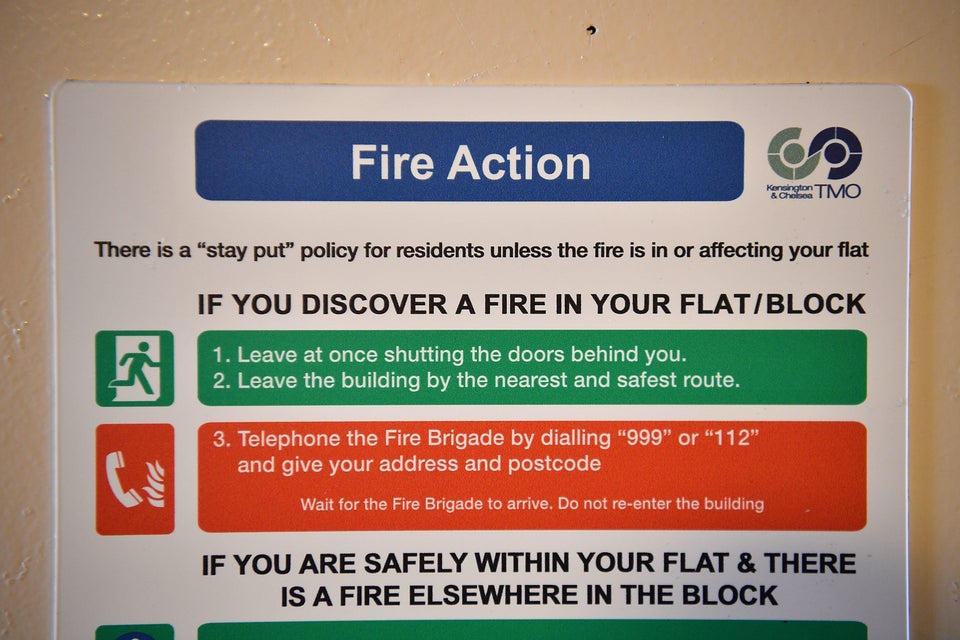
Leon Neal via Getty Images
Long-standing strategies for fighting fires urge people to stay inside and await evacuation unless the fire was in their flat.
But this is because it is envisaged that fires in high-rises will be contained or “compartmentalised”. It assumes that most fires can be contained behind each flat’s fireproof front door.
The Grenfell fire spread at a rate emergency services called "unprecedented".
The London Fire Brigade's general advice says: "Walls, floors and doors in flats and maisonettes are built to give you some protection from fire – a minimum of 30 to 60 minutes.
"So, if there is a fire elsewhere in the building but not inside your home you're usually safer staying in your flat unless heat or smoke is affecting you."
But this is because it is envisaged that fires in high-rises will be contained or “compartmentalised”. It assumes that most fires can be contained behind each flat’s fireproof front door.
The Grenfell fire spread at a rate emergency services called "unprecedented".
The London Fire Brigade's general advice says: "Walls, floors and doors in flats and maisonettes are built to give you some protection from fire – a minimum of 30 to 60 minutes.
"So, if there is a fire elsewhere in the building but not inside your home you're usually safer staying in your flat unless heat or smoke is affecting you."
3
Why did the Government sit on reviewing fire regulations?
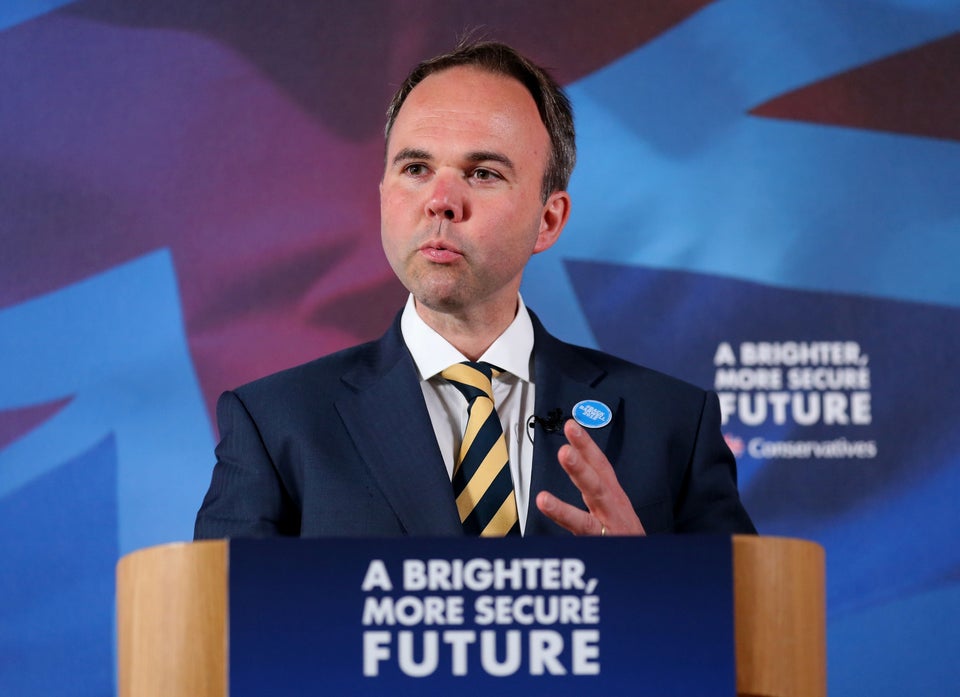
PA Wire/PA Images
Eight months ago, the Government failed to carry out a review of fire regulations in tower blocks – despite being warned of the potential for a devastating blaze.
The housing minister in charge was Gavin Barwell (pictured), who lost his seat as an MP last week and was quickly appointed Theresa May's new chief of staff.
He refused to give a date for when the review of regulations would take place.
The review was called for after an inquest into a tower block fire in Camberwell, south-east London, which killed six people and injured 20 in 2009, ruled the regulations covering such buildings were not up to scratch.
Another coroner ruled in 2013 that all high-rise buildings should be retro-fitted with sprinklers but Barwell’s predecessor as housing minister Brandon Lewis said it was not the “responsibility” of the Government to pass such a law.
The housing minister in charge was Gavin Barwell (pictured), who lost his seat as an MP last week and was quickly appointed Theresa May's new chief of staff.
He refused to give a date for when the review of regulations would take place.
The review was called for after an inquest into a tower block fire in Camberwell, south-east London, which killed six people and injured 20 in 2009, ruled the regulations covering such buildings were not up to scratch.
Another coroner ruled in 2013 that all high-rise buildings should be retro-fitted with sprinklers but Barwell’s predecessor as housing minister Brandon Lewis said it was not the “responsibility” of the Government to pass such a law.
Advertisement
4
Did cuts to the council and fire brigade hinder their ability to keep people safe?

Pacific Press via Getty Images
The fire brought austerity into sharp focus, from cuts to the local council to cuts to the fire service.
The first fire engine arrived six minutes after the first 999 call but former firefighter John Edwards told HuffPost UK cuts to the number of firefighters would inevitable lengthen response times.
"Nationally [we’ve had] an increase in fire fatalities. We’ve got response times lengthening. Those things are not coincidence in my view,” he said.
"Full time firefighters deliver the emergency response but also the prevention and detections, which would’ve critical in places like Grenfell Tower.”
On the day of the fire, Labour leader Jeremy Corbyn suggested spending cuts had hindered the local councils ability to ensure high-rise buildings were safe.
He added: “There were very clear lessons to be learned then and the need to install equipment in high rise buildings. There has to be a sprinkler system installed in tower blocks.
"If you cut local authority expenditure then the price is paid somehow."
The first fire engine arrived six minutes after the first 999 call but former firefighter John Edwards told HuffPost UK cuts to the number of firefighters would inevitable lengthen response times.
"Nationally [we’ve had] an increase in fire fatalities. We’ve got response times lengthening. Those things are not coincidence in my view,” he said.
"Full time firefighters deliver the emergency response but also the prevention and detections, which would’ve critical in places like Grenfell Tower.”
On the day of the fire, Labour leader Jeremy Corbyn suggested spending cuts had hindered the local councils ability to ensure high-rise buildings were safe.
He added: “There were very clear lessons to be learned then and the need to install equipment in high rise buildings. There has to be a sprinkler system installed in tower blocks.
"If you cut local authority expenditure then the price is paid somehow."
5
Why hadn't Grenfell had a fire safety check in 18 months?
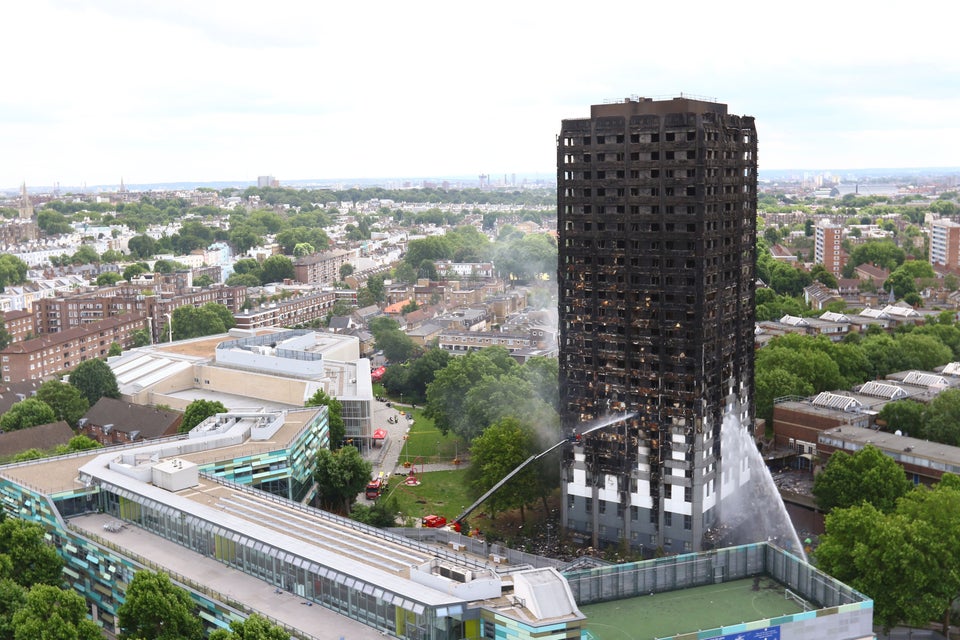
PA Wire/PA Images
Grenfell Tower had not been checked for fire safety for 18 months, according to a Freedom of Information request by Inside Housing.
The building's last official fire risk assessment was in December 2015, after the building received new cladding as part of its refurbishment project but before it was completed.
Kensington and Chelsea Tenant Management Organisation manages 82 towers on behalf of the council, and 23 have also not received a FRA for the last 18 months or longer. But most have been checked more recently than Grenfell.
The building's last official fire risk assessment was in December 2015, after the building received new cladding as part of its refurbishment project but before it was completed.
Kensington and Chelsea Tenant Management Organisation manages 82 towers on behalf of the council, and 23 have also not received a FRA for the last 18 months or longer. But most have been checked more recently than Grenfell.
6
Did the building's managers ignore residents' warnings of the fire threat?

PA Wire/PA Images
A group of residents who call themselves The Grenfell Action Group claim their repeated warnings about the building were ignored.
They say they told Kensington and Chelsea Tenant Management Organisation they had concerns about the fact there was only one escape route, the placement of gas pipes near it, rubbish piling up inside and presenting a fire hazard, and the absence of a building-wide sprinkler or alarm system.
In 2013, they warned on their blog that the closure of a nearby car park would severely restrict the fire brigade's access to the tower.
"It is a truly terrifying thought but the Grenfell Action Group firmly believe that only a catastrophic event will expose the ineptitude and incompetence of our landlord," they wrote in a blogpost from last November.
They say they told Kensington and Chelsea Tenant Management Organisation they had concerns about the fact there was only one escape route, the placement of gas pipes near it, rubbish piling up inside and presenting a fire hazard, and the absence of a building-wide sprinkler or alarm system.
In 2013, they warned on their blog that the closure of a nearby car park would severely restrict the fire brigade's access to the tower.
"It is a truly terrifying thought but the Grenfell Action Group firmly believe that only a catastrophic event will expose the ineptitude and incompetence of our landlord," they wrote in a blogpost from last November.
Advertisement
7
Why aren’t old high rises fitted with sprinklers?
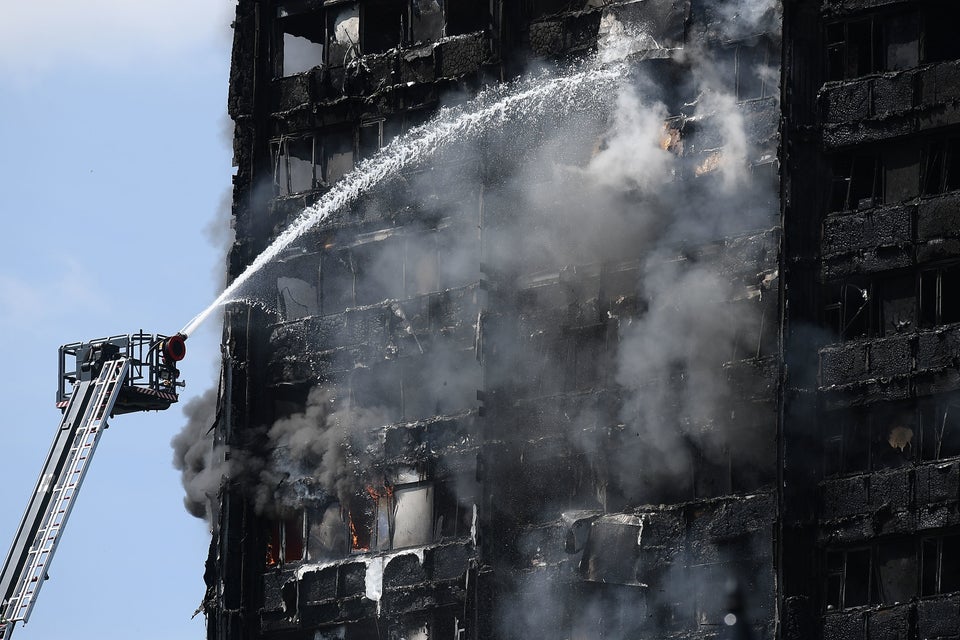
Carl Court via Getty Images
A new building must have a sprinkler system but that requirement is not the case for an old tower block such as Grenfell Tower, which was built in 1974.
Retrofitting sprinklers has been done in similar blocks before but 4,000 similar buildings around the country lack water sprinkler systems, according to the Commons All-Party Group on Fire Safety and Rescue.
Labour MP and ex-fire minister Jim Fitzpatrick, a firefighter in the service for more than 20 years, told HuffPost UK: "This is one of the reasons that we’ve been asking for an urgent review of the fire safety regulations, because we need to keep up to speed with developments in construction, developments in risk and better ways of protecting people.”
Retrofitting sprinklers has been done in similar blocks before but 4,000 similar buildings around the country lack water sprinkler systems, according to the Commons All-Party Group on Fire Safety and Rescue.
Labour MP and ex-fire minister Jim Fitzpatrick, a firefighter in the service for more than 20 years, told HuffPost UK: "This is one of the reasons that we’ve been asking for an urgent review of the fire safety regulations, because we need to keep up to speed with developments in construction, developments in risk and better ways of protecting people.”
8
Should landlords be self-assessing fire risk?
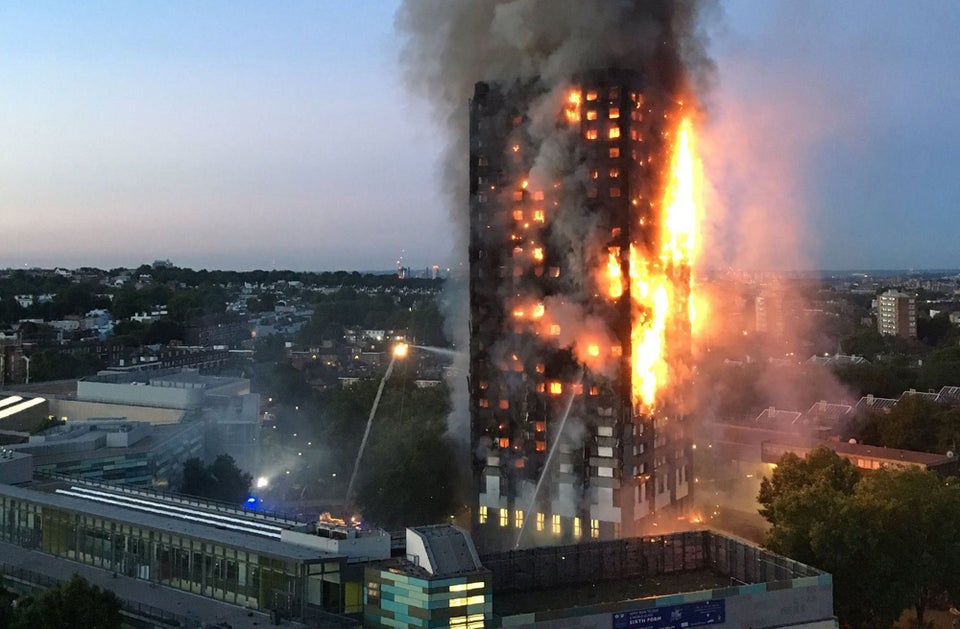
AFP
Introduced in 2006, the Regulatory Reform (Fire Safety) Order meant building owners were responsible for assessing fire risk in multi-occupancy buildings, not the fire service.
The old system of fire brigades issuing safety certificates was scrapped in the biggest revision of fire safety guidance since 1971.
The old system of fire brigades issuing safety certificates was scrapped in the biggest revision of fire safety guidance since 1971.
9
Are building regulations keeping people safe?
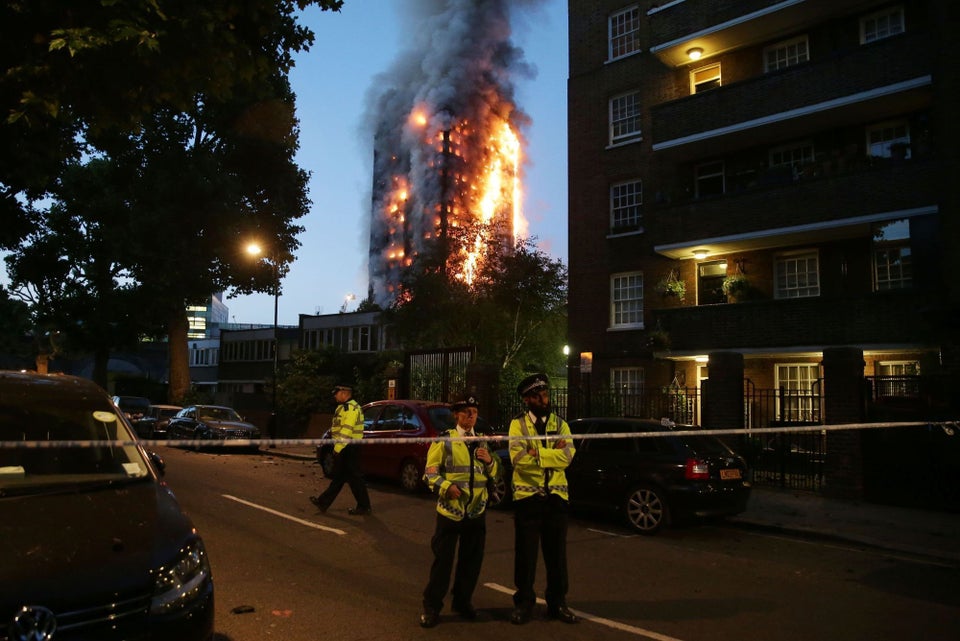
EFE
Rydon, the main contractor of the refurbishment, has said the project met all required building regulations, as well as fire regulation and health and safety standards.
But are the regulations thorough enough?
On the Kensington and Chelsea Borough Council’s website, the authority suggests the building was approved on a “building notice”, which experts see as a "fast track planning application" that does not require detailed proposals and plans to be submitted as with "full" planning approval.
It relies on an inspector approving the works by eye.
"This type of application is wholly inappropriate for large complex buildings and should only be used on small, simple domestic buildings," said Geoff Wilkinson, managing director of Wilkinson Construction Consultants.
The council has not responded to HuffPost UK's request for comment.
But are the regulations thorough enough?
On the Kensington and Chelsea Borough Council’s website, the authority suggests the building was approved on a “building notice”, which experts see as a "fast track planning application" that does not require detailed proposals and plans to be submitted as with "full" planning approval.
It relies on an inspector approving the works by eye.
"This type of application is wholly inappropriate for large complex buildings and should only be used on small, simple domestic buildings," said Geoff Wilkinson, managing director of Wilkinson Construction Consultants.
The council has not responded to HuffPost UK's request for comment.
Advertisement
10
Why didn't the Adair Tower fire lead to action to prevent the one in Grenfell Tower?

SWNS.com
In 2015, an arson caused a fire in the Adair Tower (damage pictured), which was also managed by Kensington and Chelsea Tenant Management Organisation - which is effectively a private company wholly-owned by the Kensington and Chelsea Borough Council.
The London Fire Brigade issued enforcement notices for the organisation to take action in Adair Tower and Hazlewood Tower, another of 82 buildings it manages. But the brigade's records show it did not issue any enforcement notice to improve the state of Grenfell Tower.
The London Fire Brigade issued enforcement notices for the organisation to take action in Adair Tower and Hazlewood Tower, another of 82 buildings it manages. But the brigade's records show it did not issue any enforcement notice to improve the state of Grenfell Tower.
11
Did the alarms sound?

PA Wire/PA Images
Several residents said they did not hear a building-wide alarm. One survivor claimed that the fire alarm in the building did not go off until 4am - three hours after the blaze began.
Conservative MP and former firefighter Mike Penning told HuffPost UK: "The alarms clearly didn’t go off in parts of the building.
"That worries me because that’s part of the regulations already, before you even think about more regulations.”
Conservative MP and former firefighter Mike Penning told HuffPost UK: "The alarms clearly didn’t go off in parts of the building.
"That worries me because that’s part of the regulations already, before you even think about more regulations.”
